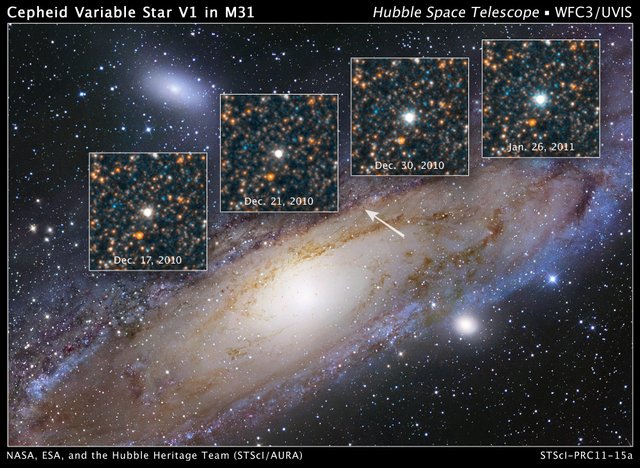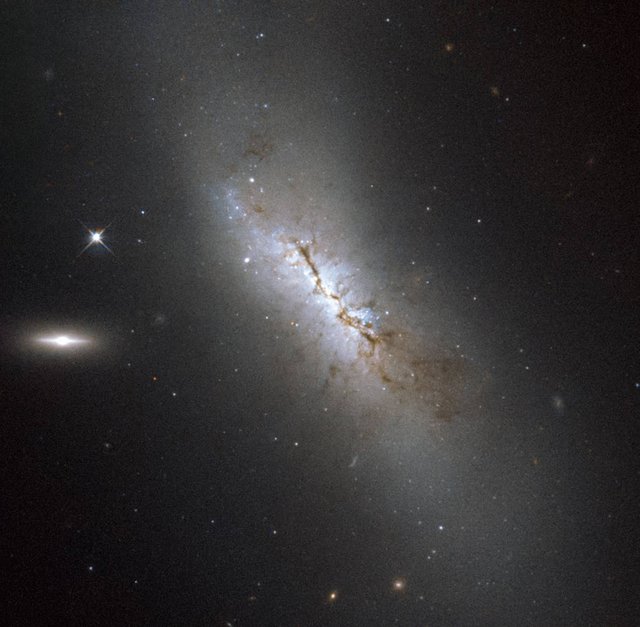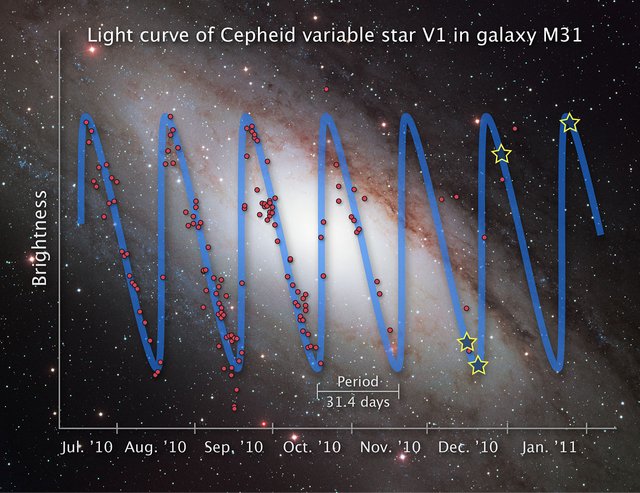Variable Stars, The Crazy Next Door Neighbor of the Cosmos
All Stars Vary in Brightness Slightly, but Some Vary by Large Amounts.

(source)
Variable Stars are Rare
We have found a total of nearly 46 thousand variable stars. This is indeed a large amount, but compared to the amount of stars in our own galaxy alone it is paltry. There may be anywhere from 100 billion to more than 400 billion stars in the Milky way. However, a survey of all or even a large portion of stars in our galaxy is nearly impossible with our current state of technology. We are on the outer fringes of the galaxy and can not see the other side easily, if at all.
Variable Stars Change in Brightness
Really they change in apparent brightness. It is hard to tell exactly how bright a star is, because the more distant a light source is the less light from it hits us. This is by the cube of the distance, so if an object appeared 9 times brighter it might actually produce 9 times as much light, or it might just be half as far away. Since stars are rarely the same distance away it is almost always a combination of the two.
A variable star can change in brightness for many reasons; it could be shedding off gas, it could have a dark partner that blocks some of the light, it could go supernova, or it could just be a pulsar. Scientists have separated variable stars into a few main categories. We have intrinsic variables and extrinsic variable stars. Intrinsic variable stars vary because of a processes happening on or within the star, while Extrinsic ones come from another source.
Intrinsic ones are separated into three types; Cepheid Variables, Cataclysmic Variables and Eruptic Variables. Cepheid variables are stars that regularly expand and shrink. They can be 500-300,000 times brighter than our sun, locked in a cycle from 1 to 100 days. Each Cepheid variable star has its own cycle that rarely ever changes. Now we also have the less predictable Cataclysmic variables, as their name implies the change is massive and sudden. Supernova, Recurrent Novae and dwarf novae are examples of this. Supernova are massive explosions that destroy a star and can outshine an entire galaxy. Recurrent Nova are smaller explosions that happen on a star's surface and not destroy the star. Recurrent Nova usually happen in binary pairs. Dwarf Novae usually happen when two dwarf stars that transfer mass back and forth, this can cause small to relatively large explosions. Eruptic Variables are a little different from the other two. They are caused by stars running into some form of interstellar medium, usually gas and dust. There are many different types of interactions and sub-categories Eruptic variables has been divided into, but they all are closely related.

(source)
The other category of variable stars, Extrinsic variables, vary mostly because of rotation or other stars.Many neutron stars shoot off beams of higher intensity at their magnetic poles, if it is rotating it shoots them off in different directions. When they rotate any object their poles are facing is going to see the star increase and decrease in apparent brightness. Many of them spin extremely fast, in fact the fastest observed spins around almost forty four thousand times a minute.Other, less drastic, rotating systems include binary pairs. Sometimes a bright star and a dim star orbit each other. If someone were to be in the position where the brighter one is blocked out by the larger one during their orbit, they would see the star’s brightness vary based on the size and brightness of its partner.
(citation)
Variable Stars Have Been Found Before
Even though they are rare, many are close and vary in brightness enough to be seen with the naked eye. Mira was the first recurrent variable star ever seen. It was discovered by David Fabricius in 1596. He saw it again in 1609 and watched it until he discovered it had period of variance of eleven months. This discovery had no major impact, unlike V1 aka “Hubble Variable Number One”. This star was discovered in 1932 and was the first variable star found outside of our home galaxy. It was found in our nextdoor neighbor, Andromeda. Before V1 was discovered we couldn’t tell what galaxies were, we even called them “spiral nebula” because we first thought they were within the Milky Way. This all changed when we found that variable star. That star was the first solid evidence that our galaxy is not alone.
Ninety years after V1 was discovered we turned the Hubble telescope back to look at this star. Many measurements were taken of its spectrum, pictured below.

(source)
Variable stars have helped us make important discoveries about our universe, even though they usually come from simple and predictable events. In the end the universe a collection of large amounts of simple events, we just need to understand them.